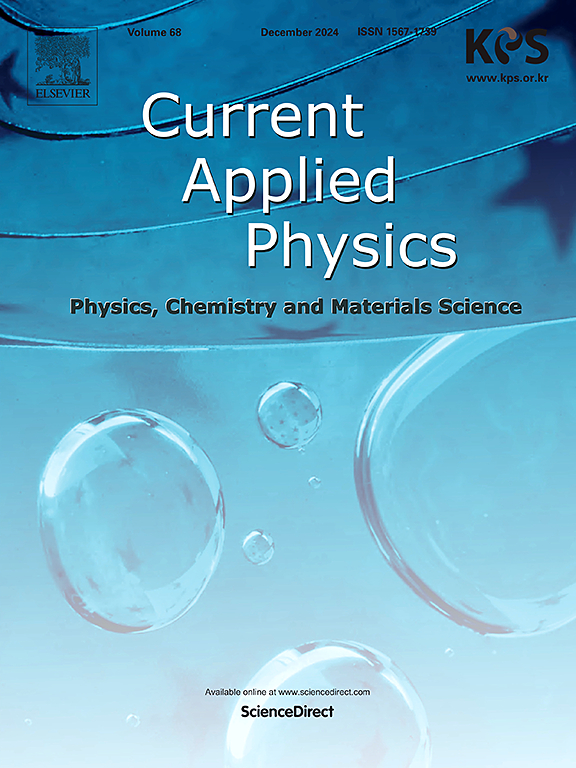Griffiths phase and magnetocaloric behaviors of Co-doped Nd0.6Sr0.4MnO3
IF 3.1
4区 物理与天体物理
Q3 MATERIALS SCIENCE, MULTIDISCIPLINARY
引用次数: 0
Abstract
Nd0.6Sr0.4Mn1-yCoyO3 (y = 0–0.09) compounds have been fabricated by using solid-state reactions. X-ray diffraction analyses reveal their monophase in the Imma orthorhombic structure. When y increases, there are gradual reductions of the unit-cell parameters and porosity. Concurrently, the Curie temperature (TC) also reduces from 280 K (y = 0) to ∼232 K (y = 0.09). In the vicinity of TC, we have observed the Griffiths phase that more develops as increasing y. The presence of this phase enhances magnetocaloric responses, corresponding to the operating range widened above 95 % and the cooling power enhanced ∼30 % for an applied field H = 30 kOe. All materials exhibit the characters of a second-order phase transition with a narrow hysteresis loop, suggesting their applicability in magnetic cooling devices operating below room temperature. A coexistence of Mn3+,4+ and Co3+,4+ ions is thought to establish randomly competing ferromagnetic and antiferromagnetic interactions in Nd0.6Sr0.4Mn1-yCoyO3 compounds that widen the Griffiths phase, short-range magnetic ordering, and magnetocaloric response.

共掺杂Nd0.6Sr0.4MnO3的Griffiths相和磁热行为
利用固相反应制备了Nd0.6Sr0.4Mn1-yCoyO3 (y = 0-0.09)化合物。x射线衍射分析显示它们在Imma正交结构中为单相。随着y的增大,孔隙率和单胞参数逐渐减小。同时,居里温度(TC)也从280 K (y = 0)降低到~ 232 K (y = 0.09)。在TC附近,我们观察到Griffiths相随着y的增加而进一步发展。该相的存在增强了磁热响应,对应于H = 30 kOe的工作范围扩大到95%以上,冷却功率增强了~ 30%。所有材料都表现出具有窄磁滞回线的二阶相变特征,表明它们适用于室温以下的磁冷却装置。Mn3+,4+和Co3+,4+离子的共存被认为在Nd0.6Sr0.4Mn1-yCoyO3化合物中建立了随机竞争的铁磁和反铁磁相互作用,从而扩大了Griffiths相,短距离磁有序和磁热响应。
本文章由计算机程序翻译,如有差异,请以英文原文为准。
求助全文
约1分钟内获得全文
求助全文
来源期刊

Current Applied Physics
物理-材料科学:综合
CiteScore
4.80
自引率
0.00%
发文量
213
审稿时长
33 days
期刊介绍:
Current Applied Physics (Curr. Appl. Phys.) is a monthly published international journal covering all the fields of applied science investigating the physics of the advanced materials for future applications.
Other areas covered: Experimental and theoretical aspects of advanced materials and devices dealing with synthesis or structural chemistry, physical and electronic properties, photonics, engineering applications, and uniquely pertinent measurement or analytical techniques.
Current Applied Physics, published since 2001, covers physics, chemistry and materials science, including bio-materials, with their engineering aspects. It is a truly interdisciplinary journal opening a forum for scientists of all related fields, a unique point of the journal discriminating it from other worldwide and/or Pacific Rim applied physics journals.
Regular research papers, letters and review articles with contents meeting the scope of the journal will be considered for publication after peer review.
The Journal is owned by the Korean Physical Society.
 求助内容:
求助内容: 应助结果提醒方式:
应助结果提醒方式:


